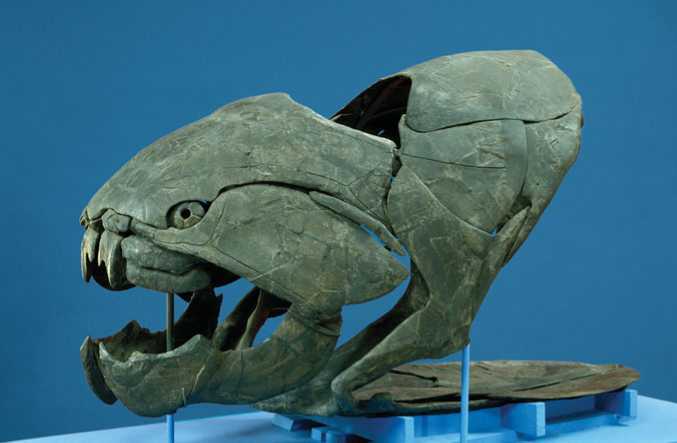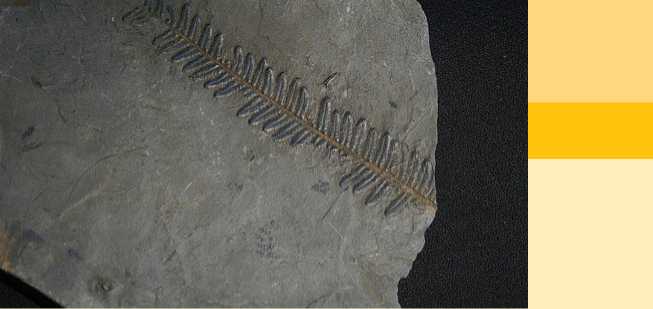1. The major paleocontinents at the start of the Paleozoic were Laurentia, Baltica, Siberia, and Gondwana. Smaller tectonic pieces included Avalonia and the Kazakhstan Arc.
2. Sea level was high through most of the Paleozoic, resulting in flooding of the continental shelves with shallow seas called epeiric seas, or epicontinental seas.
3. The Cambrian explosion was the time when most marine animal groups originated or first radiated. Many forms developed resistant skeletons. Biomineralization in some groups led to the advent of a good fossil record.
4. In the early Paleozoic, burrowing animals converted mat-stabilized sediment surfaces to ones that were more fluid rich. This ecological change is called the Cambrian substrate revolution.
5. The Cambrian fossil record is characterized by three distinct fossil assemblages: (1) diverse trace fossils; followed by (2) diverse small shelly fossils; and (3) archaeocyaths and other sponges, trilobites, brachiopods, mollusks, hyoliths, and other remains.
6. Some Cambrian deposits are notable for their exceptionally preserved fossils—fossilized remains of nonbiomineralized or lightly biomineralized cuticle, gut contents, and internal soft parts. These deposits provide unusually complete views of ancient ecosystems.
7. Trilete spores indicate that plants may have made the transition to land in the Cambrian Period.
8. Several mass extinctions in Cambrian time resulted in quite different post-Cambrian communities of marine organisms.
9. The Taconic orogeny (Ordovician), due to closure of the Iapetus Ocean between Laurentia and Baltica, was the first of three mountain-building episodes in the Appalachian region of North America.
10. In the Ordovician, predatory cephalopods and fishes became prevalent. Other important faunal elements included graptolites, bryozoans, starfishes, brittle stars, brachiopods, and mollusks.
11. Glaciation occurred at the end of the Ordovician Period. As glaciation reached a maximum, marine organisms suffered extinctions, although major groups were not eliminated.
2
1. Silurian marine invertebrates mostly filled niches vacated in the end-Ordovician biotic crisis. Two exceptions were tabulate corals and stromatoporoid sponges, which became reef-formers.
2. The first jawed fishes appeared in Ordovician oceans.
3. The earliest definitive vascular land plants are Silurian in age. Arthropods also invaded the land by the Silurian Period.
4. Continental collision between Laurentia and Baltica initiated the Caledonian orogeny in the Silurian-Devonian and the Acadian orogeny in the Devonian. Suturing of the continents resulted in a larger continent called Euramerica. Sediments shed to the west of the Acadian Mountains filled the Appalachian Basin, and sediments shed to the east comprise the Old Red Sandstone and its equivalents.
5. The Devonian Period was a time of important biotic changes in marine and terrestrial ecosystems. Jawed fishes diversified, ammonoid cephalopods appeared, forests were established on land, land-dwelling amphibians appeared, and insects evolved from wingless terrestrial hexapods.
6. Many marine species were eliminated in a biotic crisis near the end of the Devonian Period.

3

1. The Carboniferous Period was a time of climatic transition from a greenhouse world in the early half of the period to an icehouse world in the later half.
2. Assembly of Pangea began in the Carboniferous Period. Mountain building in Europe and northwestern Africa is ascribed to the Hercynian (or Variscan) orogeny. In North America, orogenic activity called the Alleghanian (or Appalachian) orogeny comprises the third and final phase of mountain building in the Appalachian region.
3. The Carboniferous Period was a time of transition from a calcite sea, which had been in existence since the Cambrian, to an aragonite sea. Aragonite sea conditions lasted until the Jurassic Period, when calcite sea conditions returned. The most recent switch to an aragonite sea occurred in the mid-Cenozoic.
4. Climate cycles of the late Carboniferous were brought on by changes in Earth's orbital patterns referred to as Milankovitch cycles. Sudden, intense cooling can result when the effects of two or more orbital cycles coincide.
5. Cycles of glacial expansion and contraction in polar Gondwana are reflected in sea level fluctuations recorded in cyclothems.
6. In the early Carboniferous (Mississippian), epeiric seas left widespread carbonate deposits, including deposits rich in crinoids, in tropical shelves.
7. In the late Carboniferous (Pennsylvanian), enormous wetlands stretched along tropical coasts. The massive production of vegetative biomass turned coastal wetland areas into coal swamps.
8. Carboniferous coal swamps were home to diverse insects and other arthropods, amphibians, and the earliest reptiles.
9. In the Permian Period, the supercontinent Pangea was a continuous landmass that altered ocean circulation patterns and experienced strong latitudinal climatic gradients.
10. Late Paleozoic marine faunas were rich in typical Paleozoic forms, especially brachiopods, bryozoans, rugose corals, and mollusks. Fusulinid foraminifera evolved rapidly through the late Carboniferous and Permian.
11. Land-dwelling reptiles, including lizards and archosaurs, diversified in the Permian Period. Synapsids appeared for the first time in the Permian.
12. More than 80% of marine species became extinct by the end of the Permian Period. Among the groups that disappeared were trilobites, rugose corals, productid brachiopods, fusulinids, and lacy bryozoans.




 World History
World History









